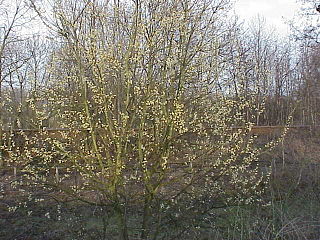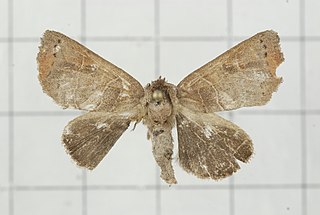
Zingiberaceae or the ginger family is a family of flowering plants made up of about 50 genera with a total of about 1600 known species of aromatic perennial herbs with creeping horizontal or tuberous rhizomes distributed throughout tropical Africa, Asia, and the Americas.

Sorghum is a genus of flowering plants in the grass family Poaceae. Seventeen of the 25 species are native to Australia, with the range of some extending to Africa, Asia, Mesoamerica, and certain islands in the Indian and Pacific Oceans. One species is grown for grain, while many others are used as fodder plants, either cultivated in warm climates worldwide or naturalized, in pasture lands. Sorghum is in the subfamily Panicoideae and the tribe Andropogoneae.

Oryza is a genus of plants in the grass family. It includes the major food crop rice. Members of the genus grow as tall, wetland grasses, growing to 1–2 m tall; the genus includes both annual and perennial species.

The Indomalayan realm is one of the eight biogeographic realms. It extends across most of South and Southeast Asia and into the southern parts of East Asia.

The Salicaceae are a family, the willow family, of flowering plants. The traditional family included the willows, poplar, aspen, and cottonwoods. Recent genetic studies summarized by the Angiosperm Phylogeny Group have greatly expanded the circumscription of the family to contain 56 genera and about 1220 species, including Scyphostegiaceae and much of the former Flacourtiaceae.

Castilleja, commonly known as Indian paintbrush or prairie-fire, is a genus of about 200 species of annual and perennial herbaceous plants native to the west of the Americas from Alaska south to the Andes, northern Asia, and one species as far west as the Kola Peninsula in northwestern Russia. These plants are classified in the broomrape family, Orobanchaceae. They are hemiparasitic on the roots of grasses and forbs. The generic name honors Spanish botanist Domingo Castillejo.

Flacourtiaceae is a defunct family of flowering plants whose former members have been scattered to various families, mostly to Achariaceae and Salicaceae. It was so vaguely defined that hardly anything seemed out of place there and it became a dumping ground for odd and anomalous genera, gradually making the family even more heterogeneous. In 1975, Hermann Sleumer noted that "Flacourtiaceae as a family is a fiction; only the tribes are homogeneous."

Dipterocarpaceae are a family of 16 genera and approximately 695 known species of mainly tropical lowland rainforest trees. The family name, from the type genus Dipterocarpus, is derived from Greek and refers to the two-winged fruit. The largest genera are Shorea, Hopea, Dipterocarpus, and Vatica. Many are large forest emergent species, typically reaching heights of 40–70 m, some even over 80 m, with the tallest known living specimen 93.0 m tall. The species of this family are of major importance in the timber trade. Their distribution is pantropical, from northern South America to Africa, the Seychelles, India, Indochina, Indonesia and Malaysia. The greatest diversity of Dipterocarpaceae occurs in Borneo. Some species are now endangered as a result of overcutting, extensive illegal logging and habitat conversion. They provide valuable woods, aromatic essential oils, balsam, resins and are a source for plywood.

India has some of the world's most biodiverse regions. The political boundaries of India encompass a wide range of ecozones—desert, high mountains, highlands, tropical and temperate forests, swamplands, plains, grasslands, areas surrounding rivers, as well as island archipelago. It hosts
4 biodiversity hotspots:the Himalayas, the Western Ghats, the Indo-Burma region and the Sundaland. These hotspots have numerous endemic species.

Phalanta phalantha, the common leopard or spotted rustic, is a sun-loving butterfly of the nymphalid or brush-footed butterfly family.
2,3-Dihydroxybenzoic acid is a natural phenol found in Phyllanthus acidus and in the aquatic fern Salvinia molesta. It is also abundant in the fruits of Flacourtia inermis. It is a dihydroxybenzoic acid, a type of organic compound.
The colorless solid occurs naturally, being formed via the shikimate pathway. It is incorporated into various siderophores, which are molecules that strongly complex iron ions for absorption into bacteria. 2,3-DHB consists of a catechol group, which upon deprotonation binds iron centers very strongly, and the carboxylic acid group by which the ring attaches to various scaffolds through amide bonds. A famous high affinity siderophore is enterochelin, which contains three dihydroxybenzoyl substituents linked to the depsipeptide of serine.
Adoxophyes privatana, the appleleaf-curling moth, is a moth of the family Tortricidae. The species was first described by Francis Walker in 1863. It is native to south-east Asia, where it has been recorded from Taiwan, Hong Kong, Hainan in China, Nepal, India, Sri-Lanka, Thailand, Vietnam, western Malaysia, Singapore, Sumatra, Java, Borneo, the Philippines and the Chagos Archipelago. It is an accidental introduction in Great Britain.

Oeonistis altica is a member of family Erebidae. It is found in south-east Asia, including China, Hong Kong, Laos, Vietnam, Indonesia, northern India, the Philippines, Taiwan as well as in Australia in Queensland.

Flacourtia inermis, known commonly as lovi-lovi, or batoko plum, is a species of flowering plant native to the Philippines, but which has naturalized in tropical Asia and Africa.The common name of Flacourtia inermis in Indonesia, such as Tome-Tome, Lovi-lovi, lobi-lobi.

Flacourtia rukam is a species of flowering plant in the willow family, Salicaceae. It is native to China, India, and much of Southeast Asia, where it grows in forests. It is also cultivated for its edible fruit. Common names include rukam, governor's plum, Indian plum, and Indian prune.
Scardamia metallaria is a moth of the family Geometridae first described by Achille Guenée in 1858. It is found in Sri Lanka, India and Australia.

Clostera restitura is a moth of the family Notodontidae first described by Francis Walker in 1865. It is found in Oriental tropics of India, Sri Lanka, and from Hong Kong to Sundaland.















